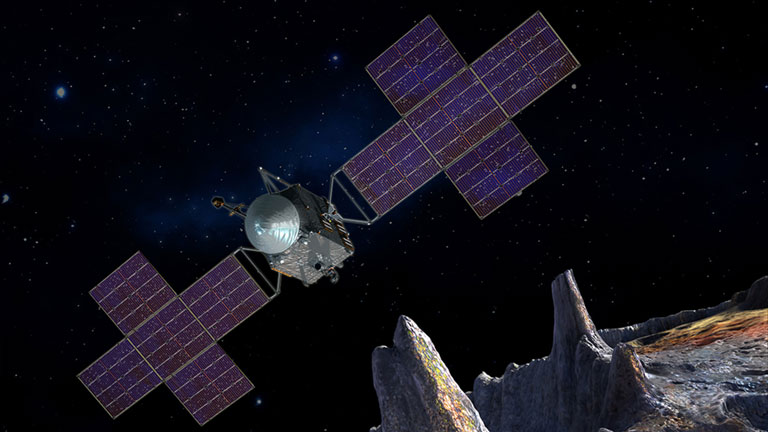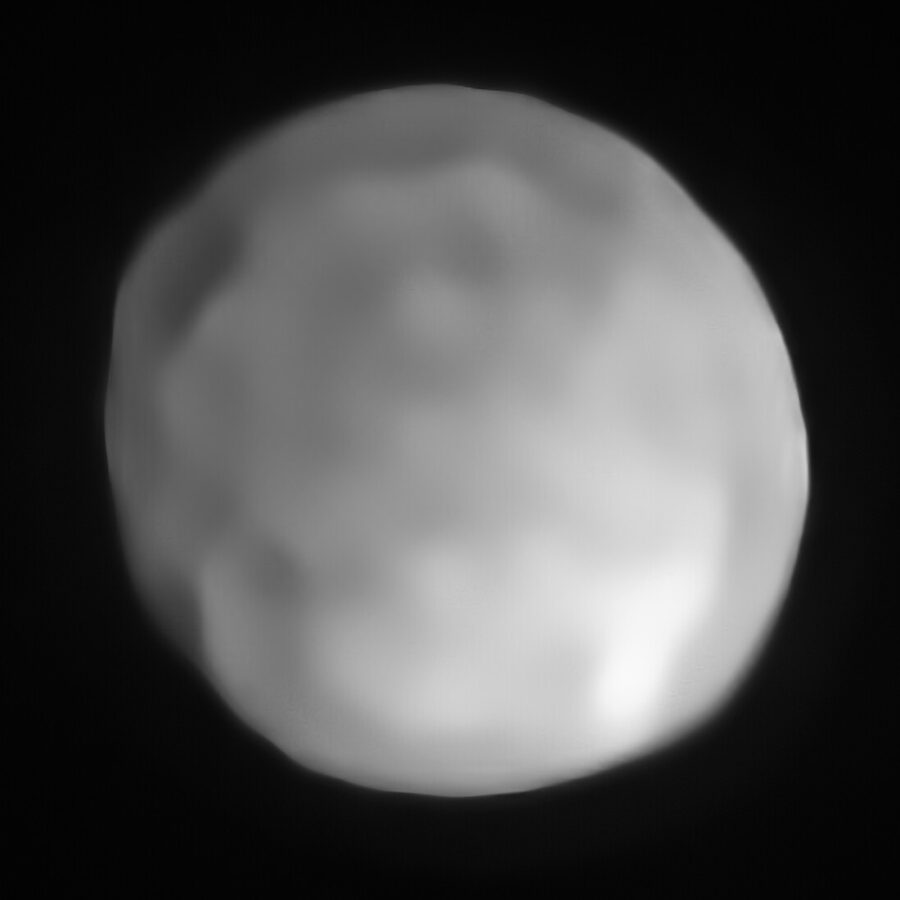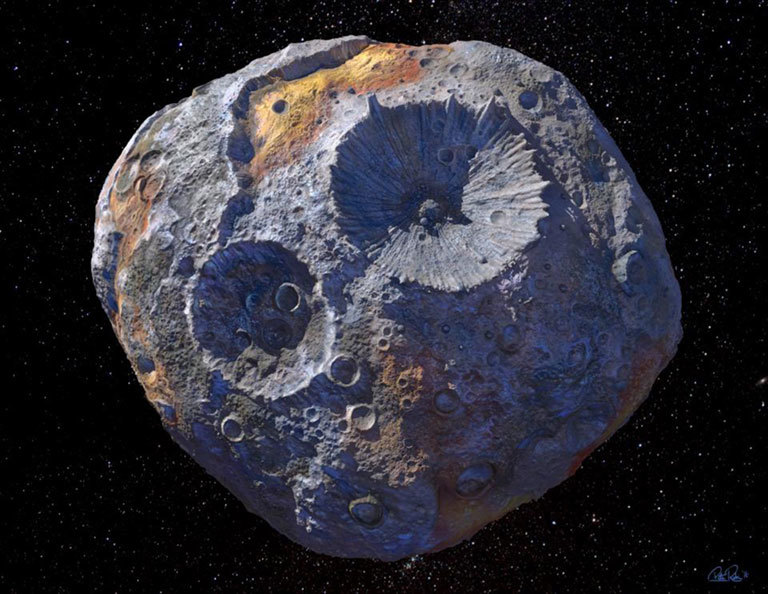See An Asteroid Worth 10,000 Quadrillion Dollars
Who knew asteroids could carry worth, any amount? Most asteroids are made of ice or rock.
This article is more than 2 years old

Who knew asteroids could carry worth, any amount? Most asteroids are made of ice or rock. They tear through the solar system, some offering a good study while others swing in close to the Earth, allowing for those “what if” scenarios, but for the most part, they move on harmlessly. But there is a new asteroid which is so valuable it is beginning to get a lot of publicity.
First things first. What the heck is a quadrillion dollars? Most know what a million looks like (not physically, of course). We know a billion and we should know a trillion. The quadrillion comes after the trillion, so we would be looking at 15 zeroes in a quadrillion. Whew. Now that we have that out of the way, $10,000 quadrillion dollars is large.
Located about 230 million miles from Earth is an asteroid of nominal size. 16 Psyche (the name of the asteroid) measures in at around 140-miles wide, one of the largest in our solar system’s main asteroid belt, found orbiting between Mars and Jupiter. But what makes this different from most asteroids, besides its large size, is that this asteroid appears to be made of metal. Scientists say 16 Psyche is so dense and metallic that they are beginning to think the asteroid is actually the leftover core of a planet that failed during its formation. These are called protoplanets.

The excitement about the structure of the asteroid is palpable. Dr. Tracy Becker is a planetary scientist in San Antonio, Texas’ Southwest Research Institute, and says via Forbes, “We’ve seen meteorites that are mostly metal, but Psyche could be unique in that it might be an asteroid that is totally made of iron and nickel. Earth has a metal core, a mantle, and crust.”
In 2019, our global economy, not just America, was at about $142 trillion. There are some who think that the combination of metal and iron (and possibly gold) that scientists think comprise Psyche could be worth north of $10 quadrillion. Road trip!
Dr. Becker’s study of 16 Psyche had the Hubble Space Telescope work angles on the asteroid. It looked at two specific points allowing Becker to observe both sides of the Psyche as it rotated. The Hubble was also able to look at Psyche with ultraviolet wavelengths of light so they could receive as much detailed information on the surface of the asteroid. “We were able to identify for the first time on any asteroid what we think are iron oxide ultraviolet absorption bands,” Becker told Forbes. “This is an indication that oxidation is happening on the asteroid, which could be a result of the solar wind hitting the surface.”
So, what made 16 Psyche? The prevailing thought is that Psyche was a forming planet that was struck by another object in the solar system. Dr. Becker explained, “It’s possible that as a Psyche protoplanet was forming, it was struck by another object in our solar system and lost its mantle and crust.”
The Race To Get Paid
Obviously, the idea of grabbing some of 16 Psyche is a tantalizing thought. So, this is why NASA has fast-tracked what they are calling the Psyche mission. The idea is to get a robot on the surface of the asteroid for first a look-see and then possibly a miner expedition. Lindy Elkins-Tanton is the lead NASA scientist on the Psyche mission and is also the director of Arizona State University’s School of Earth and Space Exploration and his take was not that simple when looking at the bigger picture. “Even if we could grab a big metal piece and drag it back here … what would you do? Could you kind of sit on it and hide it and control the global resource — kind of like diamonds are controlled corporately — and protect your market? What if you decided you were going to bring it back and you were just going to solve the metal resource problems of humankind for all time? (This is wild speculation obviously.),” he said via Forbes.

But Elkins-Tanton also had another take on the asteroid, one that seems a bit more scientific. “16 Psyche is the only known object of its kind in the Solar System, and this is the only way humans will ever visit a core. We learn about inner space by visiting outer space.”
The mission to reach 16 Psyche had an original start date of 2023, but the Psyche team came up with a plan to get things rolling with a launch in 2022. It will take four years to reach the asteroid with an arrival set for 2026, which is actually four years earlier than first anticipated.
The director of the Planetary Science Division at NASA Headquarters in Washington, Jim Green, said in a statement, “We challenged the mission design team to explore if an earlier launch date could provide a more efficient trajectory to the asteroid Psyche, and they came through in a big way. This will enable us to fulfill our science objectives sooner and at a reduced cost.” The schedule is set thusly, August of 2022 would see the Psyche launch on top of a SpaceX Falcon Heavy rocket, then a fly-past of Mars would happen in 2023, and then the Psyche would begin to orbit the asteroid in January of 2026.
According to Elkins-Tanton, there are very few other explanations for an asteroid so rich with metal. “Short of it being the Death Star… one other possibility is that its material that formed very near the Sun early in the Solar System,” Elkins-Tanton mused. “I figure we’re either going to go see something that’s really improbable and unique or something that is completely astonishing.”












